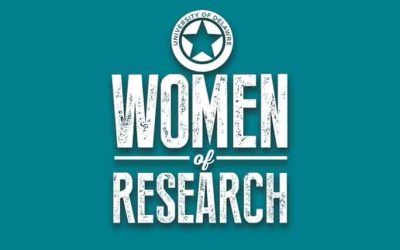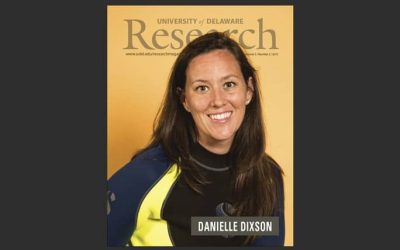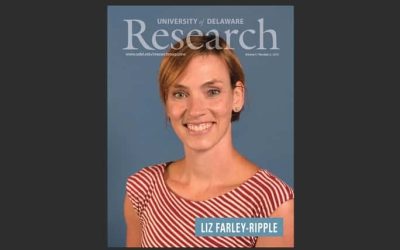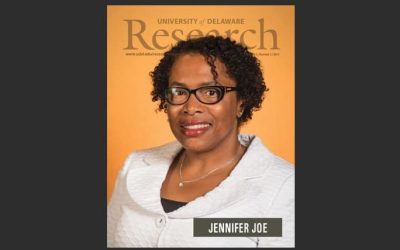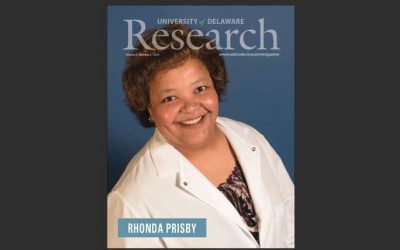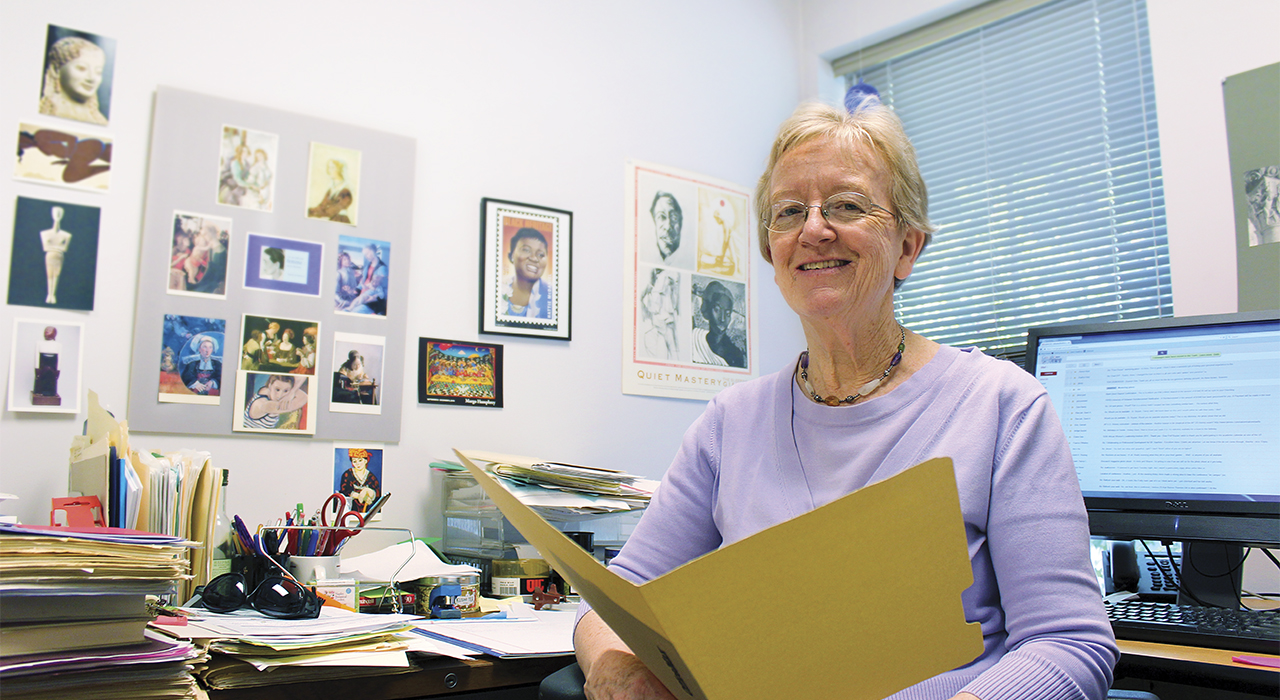
ABOUT THE AUTHOR
Anne M. Boylan, professor of history and of women and gender studies, conducts research in American history with an emphasis on women and their rights. She has written several books, including her most recent work—Women’s Rights in the United States: A History in Documents (Oxford University Press, 2015). She received the inaugural Torch Award for Women’s Equality from the UD Women’s Caucus in 2012.
Never underestimate the power of good mentoring
On the one hand, he had made a pleasant gesture. But at the same time, she wondered why he took no personal interest in making sure she actually did feel at home in her new department. He assumed that others would take on that task and work to ensure her success as a new faculty member. Perhaps it did not occur to him that he could help mentor her, whether by providing some useful information about departmental practices or offering to share syllabi or discussing classroom expectations. Perhaps he had forgotten what it was like to be the “newbie” who has to learn everyone’s name, navigate the campus, move a research program along, work up new courses, supervise students and still find time to locate a physician or a child care facility.
But faculty mentoring begins with paying attention to such issues, having empathy and taking some responsibility for all new colleagues’ success. It is particularly important for women faculty and faculty of color, not only because they belong to groups that were historically excluded or marginalized within universities, but because many still experience intersecting forms of gender and racial bias that limit their access to in-group knowledge of how academia works.
Mentoring was not always the buzzword that it is today. In 1973, when I was beginning my academic career, the primary use of the term “mentor” was to refer to one’s dissertation director. The person got you through the Ph.D. process, wrote letters of recommendation for jobs and grants, and then you were pretty much on your own. Unless, of course, your mentor had come to see you as his (I use the pronoun advisedly) protégé, as someone he could shape in his own image or at least in his image of what a university professor looked like.
The system worked well for some aspiring academics, and even occasionally for women. Franz Boas, after all, found a protégé in Margaret Mead. But it disadvantaged others, especially those who, because of gender, race, ethnicity or life circumstances, seemed unlikely to fit the mold of the pipe-smoking professor in the elbow-patched tweed jacket who could spend his summers in the lab or writing books because he had a wife to take care of life’s necessary chores. As graduate students, the women I knew avoided, or were outright rejected by, such potential mentors. In my graduate school cohort, there was some mighty chortling when one of our number, who had been accepted into a famous professor’s seminar only because she was a nun, and unlikely to betray his investment in her career by getting married, left the convent and got married. (She subsequently managed both marriage and career quite well.)
Forty-two years later, things have changed considerably. Not only has mentoring become a field of research and teaching, with hundreds of books and scholarly articles—not to mention TED Talks—on the topic, most of them published within the past 20 years, but professional organizations and universities have established prizes to reward worthy practitioners. At UD, the creation of Mentors’ Circle and its dedication in 2001 reflects the general trend. Mentoring has arrived, and as it has, so has our understanding of its meaning and significance. Thankfully, too, the issues facing women in academia have changed, from dealing with blatantly exclusionary policies to removing the institutional vestiges of those policies through inclusionary practices. Mentoring is one such practice; it can facilitate the kind of institutional transformation that the UD ADVANCE program seeks, and that is particularly crucial for women in fields such as STEM, where long-held implicit assumptions about gender and achievement can still keep women academics from reaching their full potential.
Mentoring takes many different forms, and mentors appear in many different guises. At its most basic, it seems to me, good, informal faculty mentoring involves some of these elements: providing helpful (and wanted) advice or encouragement, offering guidance, taking an interest, smoothing a path, expressing empathy, sharing information so that everyone is on the same page when it comes to procedures and policies, offering to look over a colleague’s grant proposal or tenure file, and keeping everyone “in the loop” so that no one feels excluded. Formal mentoring programs, in which a new faculty member is paired with a mentor and the two meet regularly for career-oriented conversations, can increase the success (and retention) of talented faculty members.
I am particularly taken with the possibilities for using social media for mentoring, especially when one is the “solo” woman or woman of color in a department, grappling with gender and/or racial assumptions or stereotypes. Social media-based mentoring expands the range of available mentors and helps break down feelings of isolation.
Good mentoring is crucial to the career of any academic, but especially for those who don’t arrive at an academic post knowing exactly how to get from “newbie” to full professor in 12 easy steps.
MORE STORIES
ADVANCE-ing UD
Seven faculty members are highlighted in this issue of UD Research. Indeed, there are commonalities among them—a steadfast commitment to excellence, unrelenting intellectual curiosity, mentors and role models who inspire, and a disdain for the status quo. I encourage you to read their stories to learn about their inspirations, the challenges they have faced and the scope and quality of their scholarly endeavors.
Women of Research
Extraordinary research is underway at the University of Delaware, and women are all over it. We profile seven researchers who offer insight into their work—from coral reefs to corporations—what hurdles they have cleared and what keeps them moving forward.
Danielle Dixson
A chance encounter with a tour guide at the Shedd Aquarium in Chicago is what sparked Minnesota native Danielle Dixson’s interest in marine biology. “I was 5 years old and the guide gave me a book for asking a clever question about whales,” she says.
Liz Farley-Ripple
Elizabeth Farley-Ripple did not set out to become an education researcher. As an undergraduate at Georgetown University, she started out majoring in Latin American Studies. Then came Professor Bill McDonald’s sociology course focusing on research methods. “I had an aha moment,” says Farley-Ripple. “I realized I could have an impact—and actually apply the ideas I had been reading about.”
Jennifer Joe
Jennifer Joe, the Whitney Family Professor of Accounting in the Alfred Lerner College of Business and Economics, attributes positive experiences with her professors in college as the impetus for her pursuit of an academic career.
Rhonda Prisby
Rhonda Prisby had a plan for her master’s degree in exercise physiology. She expected to work in a cardiac rehabilitation clinic. Then a professor mentioned something she hadn’t considered—her potential as a researcher.
Angelia Seyfferth
Having had the chance to conduct research taking water samples on the Chesapeake Bay early in her undergraduate studies, Angelia Seyfferth, assistant professor in the Department of Plant and Soil Sciences, is hoping to pass her enthusiasm for research to young scholars in her lab.
Margaret Stetz
As a scholar with diverse interests from 19th-century British literature to military history and fashion studies, and who shares her work in a variety of academic and community forums, Margaret D. Stetz might be expected to have difficulty summarizing what she does.
Cathy Wu
For Cathy Wu, becoming a bioinformatics expert was kind of accidental. Armed with a Ph.D. in plant pathology and a postdoc in molecular biology, she followed her husband on a job move to Tyler, Texas, in the mid-1980s, but was unable to land a good faculty position there.
Spin in spins out innovation
The University of Delaware’s “Spin In” program, founded, managed and trademarked by the Office of Economic Innovation and Partnerships, connects University undergraduate students with community entrepreneurs and early-stage startups to give them an inside look at business innovation in action and a chance to apply what they’re learning in real-life situations.
Making it clear
For the past three years, almost 90 educators from around Delaware and Maryland have been working with scientists and environmental experts from the University of Delaware and the University of Maryland. The goal is to develop a richer understanding of climate change and build effective activities and instruction plans to help their students understand the data and find potential solutions.
Solar Strong
The vast majority of the sun’s extraordinary power remains out of reach—absorbed, deflected or otherwise inaccessible to today’s power-hungry masses—but University of Delaware researchers continue their quest to capture more, store more and deploy it more efficiently.
Slaves’ lives emerge from ancient ruins
“Detfri slave of Herennius Sattius” and “Amica slave of Herennius” reads the terra-cotta tile. It was discovered atop the ancient temple in Pietrabbondante, a town tucked into the bare rock and evergreen-covered mountains more than 100 miles east of Rome.
Honors
• Dugan named Truman Scholar
• Overby elected to board of Oak Ridge consortium
• Backbone of the profession
Fearsome Fridays
Tom Fernsler, “Dr. 13,” now retired from the Delaware Center for Teacher Education, knows a lot about Friday the 13th. Do you? Take our quiz and find out!
News Briefs
• Changing the color of light
• What’s it really mean if a CEO is greedy?
• Research All-Stars field new findings



